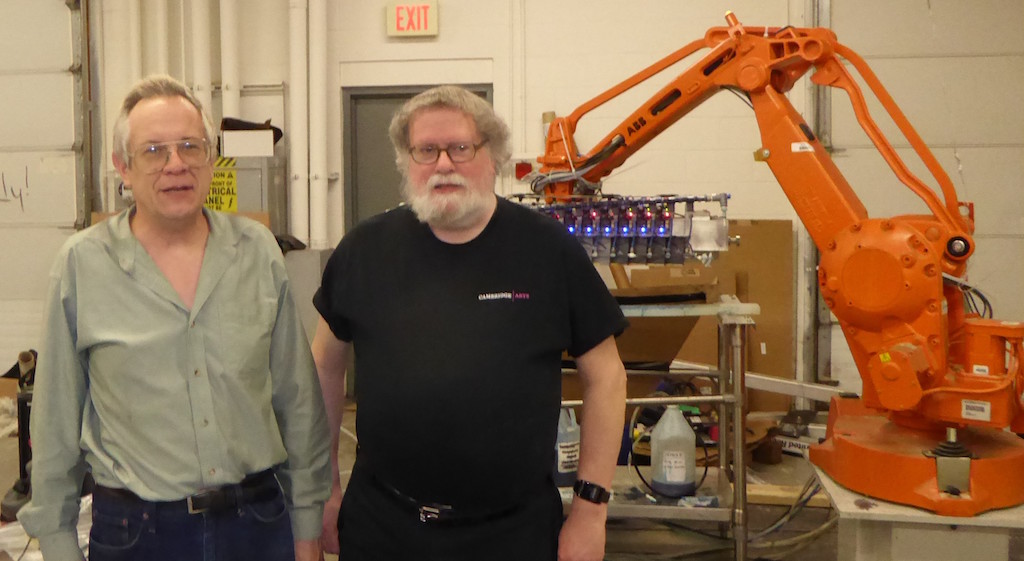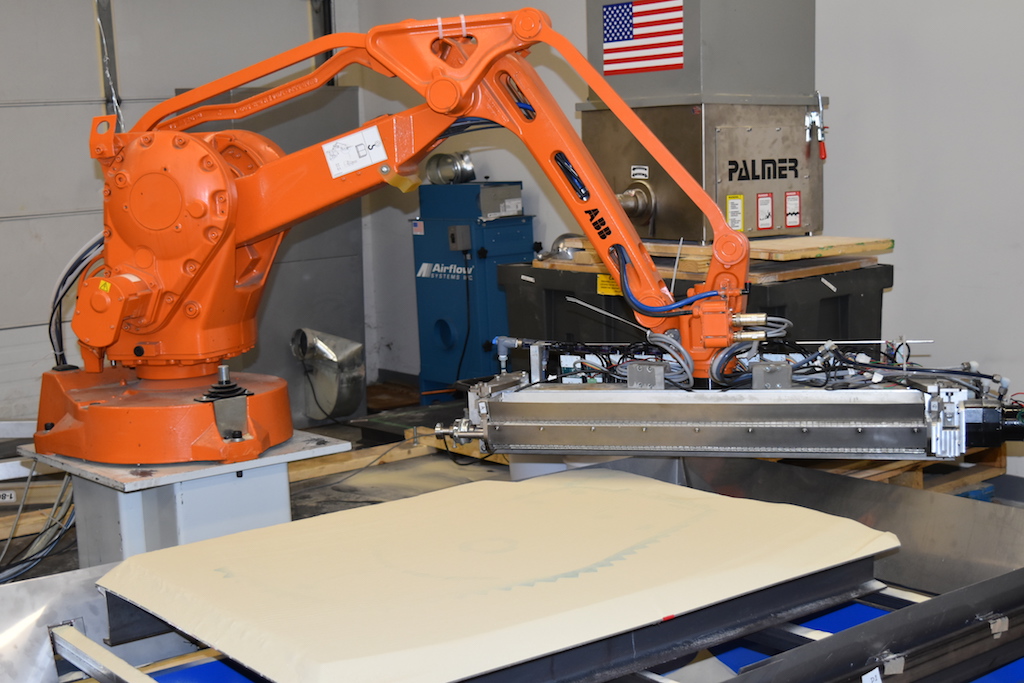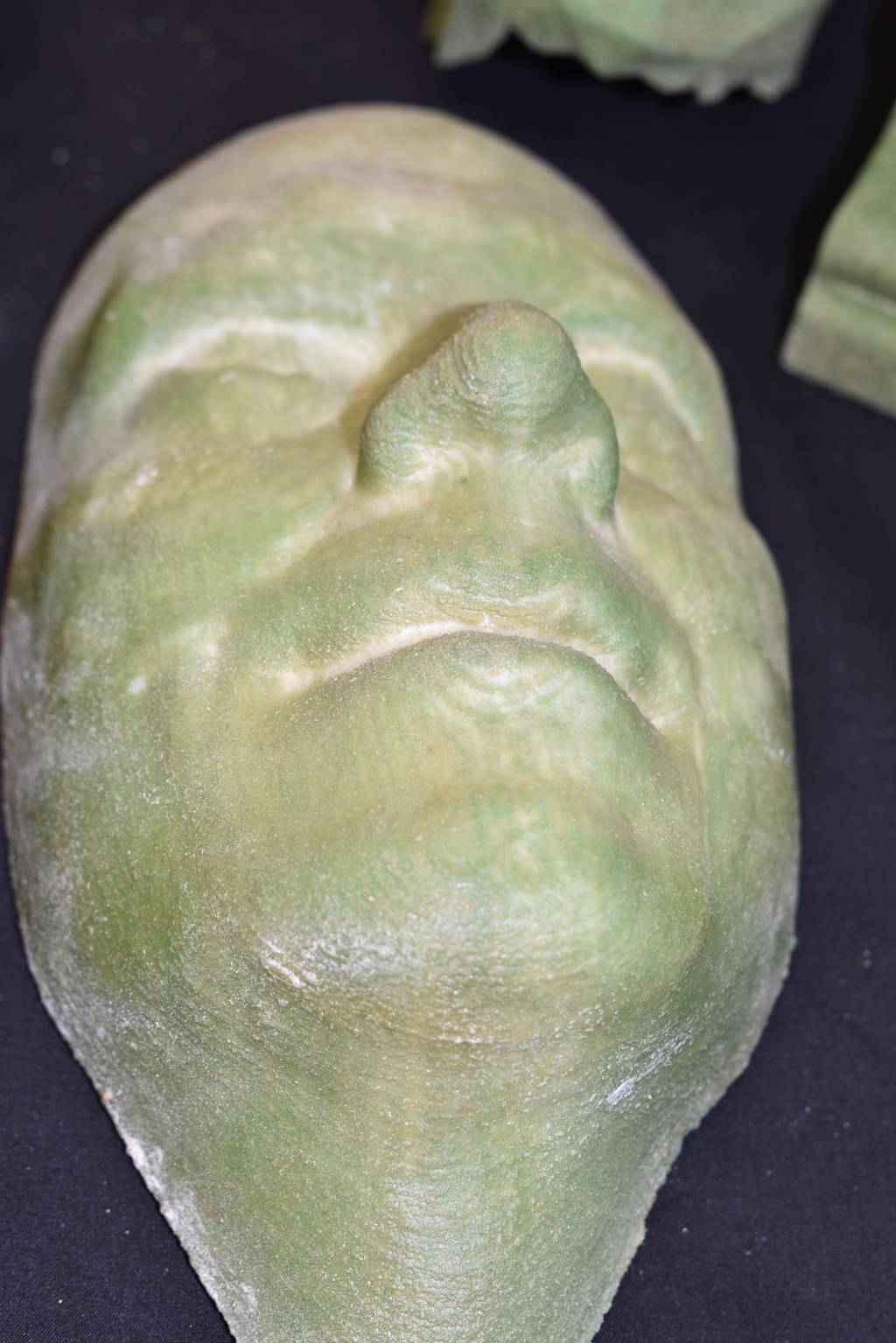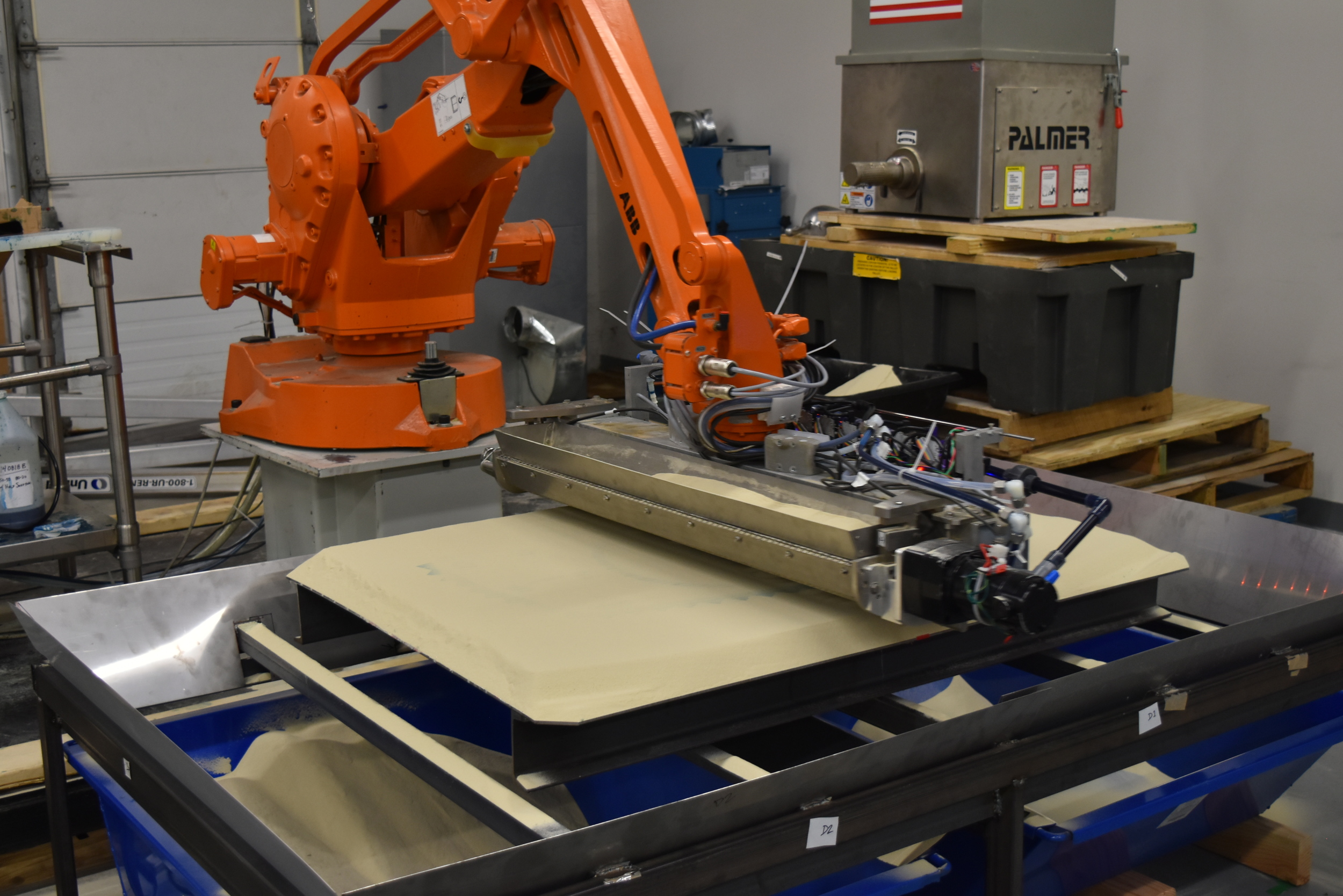
Viridis3D is developing the RAM260, a different kind of 3D industrial printer that can quickly make sand molds and cores.
What makes it so different? The first clue is in the model name, “RAM260”. “RAM” stands for Robotic Additive Manufacturing. This machine uses a standard robotic arm to move the toolhead, rather than constructing a large cartesian mechanism as their competitors have done. This simplifies the development of the machine and enables the company to focus more on the toolhead, which is very interesting.
The toolhead includes a large number of jets that can precisely deposit binder selectively over a powder bed, and also spread the next layer of powder for subsequent cycles. This video shows how the system works.
If this seems very similar to 3D Systems’s color ProJet technology, it should be – one of Viridis3D’s co-founders was also a co-founder of ZCorp, where 3D Systems acquired that technology. Now it’s being applied to the foundry industry.
Currently the company is beta testing the RAM260, but we managed to obtain some information from a long-time Fabbaloo reader, Tom Easton, who visited Viridis3D’s HQ in Massachusetts. Here is his detailed report:

Viridis3D is located in a Woburn, MA, industrial park, not far from the famous Route 128. This is where founder Jim Bredt, cofounder of ZCorp (acquired by 3DSystems in 2012), has been developing a new approach to industrial-scale 3D printing. In a brief interview, he noted that one of the challenges was finding ways to work around existing IP. The key is proprietary chemistry involving a catalyst in the powder (which limits reuse of spilled powder) which reacts with the binder to make it set.

The resulting machine, the RAM260, is an impressive device. It consists of a ABB Robotics industrial robot whose arm supports the print head assembly. The head assembly we saw in action had a dozen print modules and a total of 3,000 inkjet nozzles. As the robot’s arm sweeps over the print bed, it spreads an even layer of powder (typically foundry sand and a catalyst). On the return sweep, it prints a binder to define each layer of the shape being printed.
Foundry sand is the material of choice when making molds for foundry castings but the RAM260 can also use resin and wax powders for lost wax castings. A British university is working on ceramics with Viridis3D. They’ve sold one large unit for seven figures, shipping it to a foundry in Springfield, MA, where its success will determine the future. They’ve had a lot of interest in the beta program, and they think that with 2000 foundries in this country alone, they should be able to build and ship 5-10 per year, and ramp up from there.

The machine can print 2″ vertical/hr over a 3600 sq-cm area. Minimum feature size is .5 mm, resolution 100 dpi, layer thickness 200-1000 microns. The texture is grainy, though it can be improved by post-processing.
Their process is particularly interesting because in theory it could be scaled up to as large a robot as can be obtained. This puts Viridis3D in a position where they could challenge existing large-scale additive solution providers for foundry business.
It’s clear there are few boundaries for additive manufacturing, as new approaches and techniques are constantly being developed by multiple companies, each pushing the envelope of the possible a bit further. One of them is Viridis3D with the RAM260.
Via Viridis3D
Image Credits: Kate Savage

